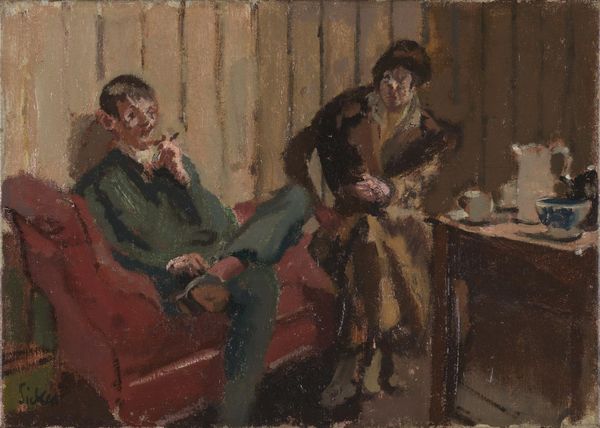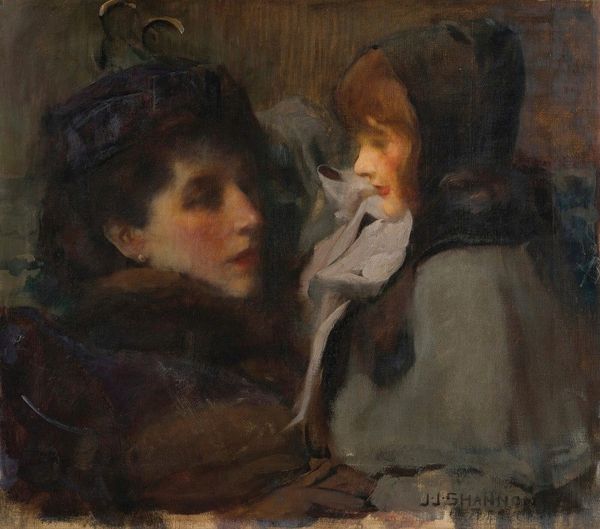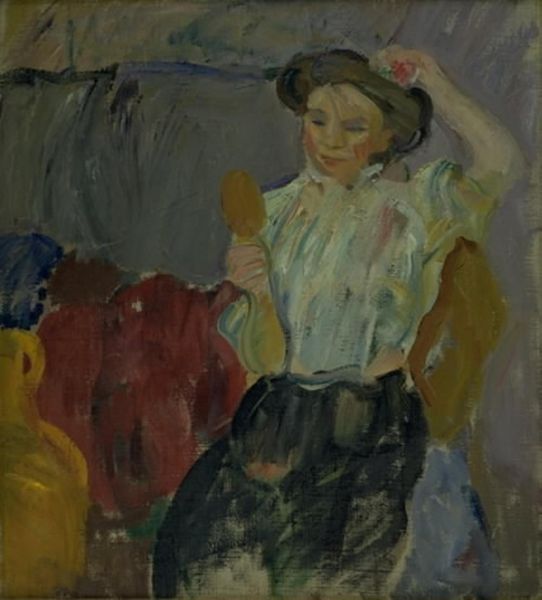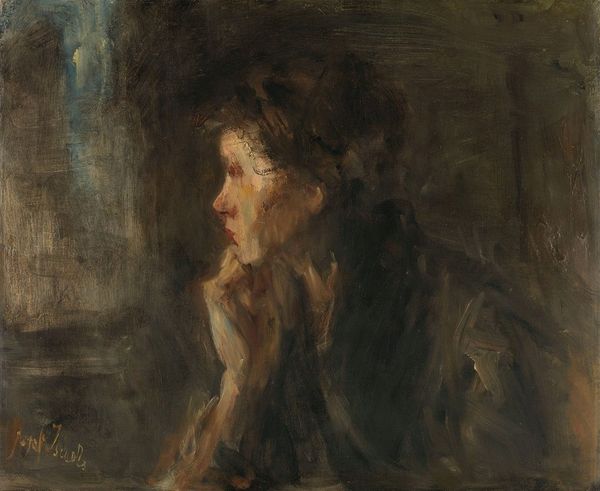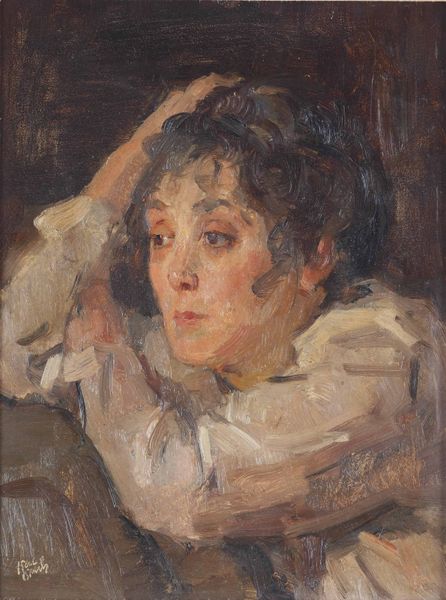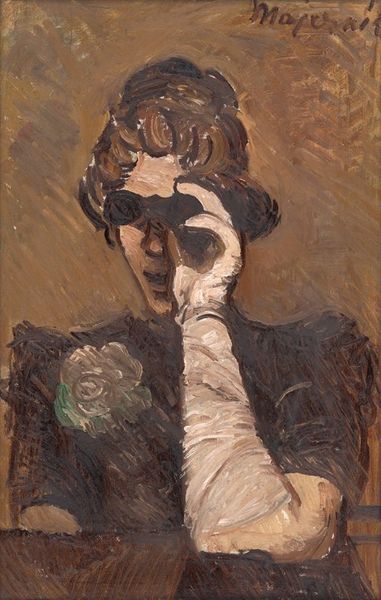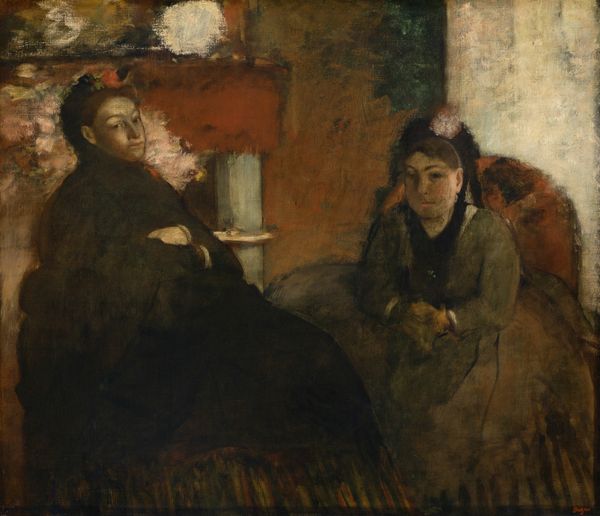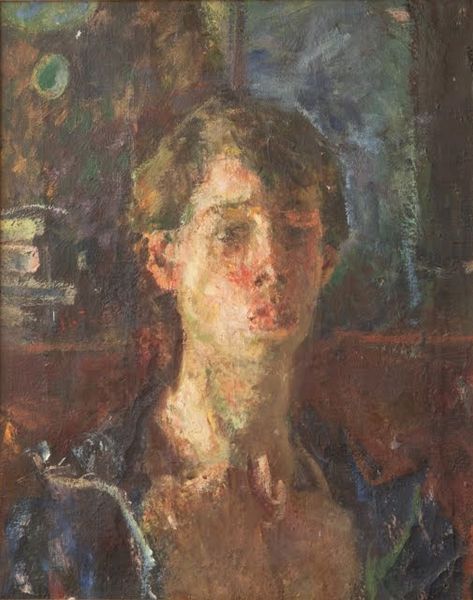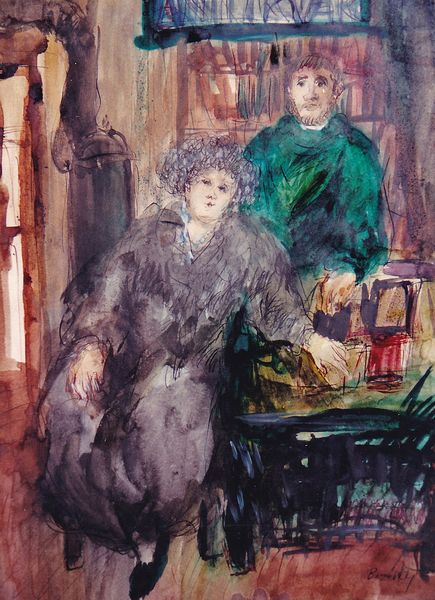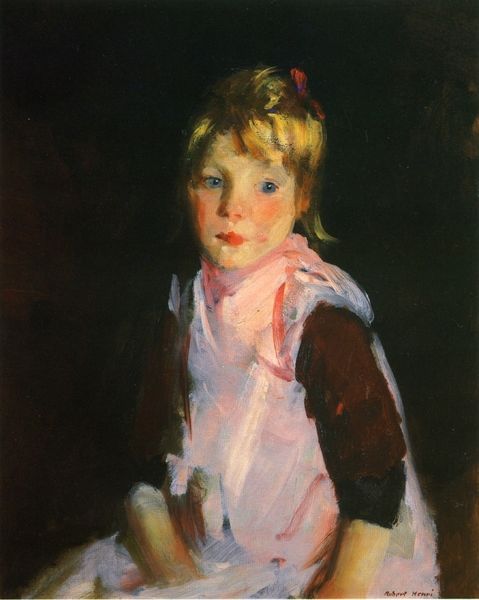
Copyright: Public domain
Curator: Isaac Israels painted "A Cigarette" in 1904, and it is now housed at the Centraal Museum in Utrecht. Editor: My first impression is one of intimacy and veiled ambiguity; the muted palette adds to this sense of subtle, concealed meaning. Curator: The casual pose and the subject matter – women smoking – point to changing societal norms, especially concerning female autonomy and leisure at the beginning of the 20th century. The very act of portraying women indulging in a habit so long associated with men can be interpreted as a quiet assertion of their presence in the public sphere. Editor: Absolutely, and look how the composition is structured! Notice how the light falls, primarily illuminating the woman on the left and how her face becomes the focal point with delicate gradations in the paint, which in turn are juxtaposed against the darker silhouette of the woman in the background. It guides your eye and really directs you to linger on that subtle detail. Curator: That juxtaposition you point out also emphasizes a visual dialectic; where we contemplate these women as simultaneously united and divided by their social circumstances and personal choices. Consider the social expectation of women at the time! Editor: I agree, and observe how the texture achieved through his brushstrokes creates movement and how those visible strokes and that dynamism really enhances the overall fleeting quality and makes you think about that exact moment in time. Curator: Precisely; the rapid brushwork contributes to the Impressionistic feel, yet the somber palette also situates it within a tradition of Dutch genre painting. I consider Israels' depiction here as a nuanced, quiet rebellion against prevailing societal mores. Editor: I will also acknowledge it suggests something inherently modern and, despite its seeming simplicity, the arrangement, coloration and lighting effects is very deliberate, creating a layered reading that provides both visual appeal and conceptual interest. Curator: It's rewarding to observe Israels’ portrayal and consider its lasting implications for how we view women’s participation in shaping social change. Editor: The tension he establishes with these formal relationships serves as a crucial aspect that enriches our visual perception and cognitive understanding.
Comments
No comments
Be the first to comment and join the conversation on the ultimate creative platform.

